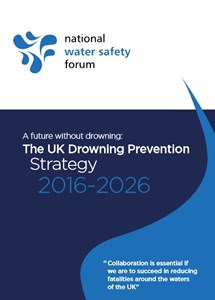The UK Drowning Prevention Strategy
A future without drowning
Tragically, on average, around 400 people drown around the UK every year and a further 200 take their own lives on our waters. Many of these deaths are preventable and we believe more can be done to reduce this loss of life.
The aim of the UK Drowning Prevention Strategy 2016-2026 is to reduce accidental drowning fatalities in the UK by 50 per cent by 2026, and reduce risk amongst the highest risk populations, groups and communities.
Our priority targets
- Every child should have the opportunity to learn to swim and receive water safety education at primary school and where required at Key Stage 3
- Every community with water risks should have a community-level risk assessment and water safety plan
- To better understand water-related self-harm
- Increase awareness of everyday risks in, on and around the water
- All recreational activity organisations should have a clear strategic
- risk assessment and plans that address key risks
Read the UK Drowning Prevention Strategy 2016-2026
In order to achieve our aim, we are asking you to go further than simply reading the strategy. By supporting the principles of the strategy and showing your commitment to the goals we will be more effective than ever in reducing drowning fatalities. By targeting groups and activities, we will raise awareness of the risks and ultimately make every community safer.
Review of progress
Since the launch of the UK's first Drowning Prevention Strategy, we have conducted regular reviews into our progress. These reports outline some of the excellent results and efforts made in pursuing the five key targets set out in the strategy.
UK DPS Review 2024/25 - A future without drowning
UK Drowning Prevention Strategy Two Year Review
Water Safety Partnerships in the UK
One of the key aims of the UK Drowning Prevention Strategy is that "every community with water risks should have a community-level risk assessment and water safety plan". To help build a picture of what this looks like, the NWSF are tracking existing water safety groups and their alignment with the current NWSF guidance on water safety partnerships.

